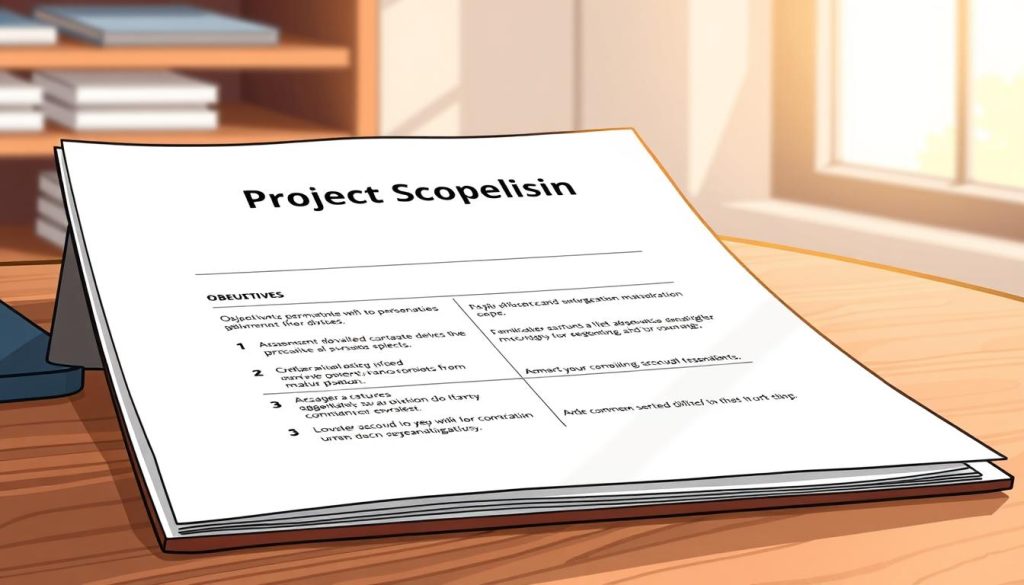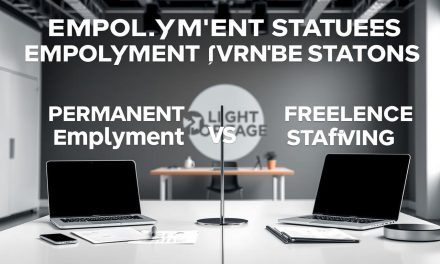What if traditional career paths are limiting your true potential? Imagine shaping your professional journey around high-impact opportunities that align with your expertise, schedule, and ambitions. The French market reveals a striking trend: 48% of professionals now choose freelance or contract roles, while 62% of businesses actively seek specialized talent for targeted initiatives.
This shift reflects more than temporary gigs – it’s a redefinition of professional success. Modern professionals increasingly prioritize autonomy and purpose over rigid office structures. Short-term engagements now serve as building blocks for sustainable careers, combining financial stability with continuous skill development.
France’s evolving economy rewards those who deliver concrete results. Specialized professionals command premium rates by focusing on specific outcomes rather than hourly commitments. This approach fosters deeper client relationships through clear scope definitions and measurable deliverables.
Table of Contents
Key Takeaways
- Nearly half of French professionals engage in freelance or contract roles
- Businesses increasingly prioritize specialized talent over traditional hires
- Project-focused models enable greater control over earnings and schedules
- Clear scope definition drives successful client partnerships
- Short-term engagements build long-term career stability
- Skill diversification becomes natural through varied projects
Introduction to the Project-Based Economy
Modern professionals face a pivotal choice: adapt to evolving market demands or risk stagnation. Over 73% of executives now manage workforces as dynamic ecosystems, blending internal teams with specialized external talent. This strategic shift lets companies access precise skills while empowering professionals to craft customized career paths.
Understanding the Shift in Today’s Freelance Landscape
Digital platforms have revolutionized how businesses and professionals connect. In France’s thriving market, 68% of independents report greater job satisfaction than traditional employees. Why? They gain control over their schedules while solving specific challenges for multiple clients.
« The future belongs to organizations that treat talent as fluid resources, not fixed costs. »
The Benefits of Flexible, Outcome-Driven Models
Companies achieve 42% faster project completion by engaging specialists for targeted initiatives. Professionals benefit through:
- Diverse income streams from multiple engagements
- Continuous skill development across industries
- Autonomy to choose assignments aligning with expertise
| Aspect | Traditional Employment | Project Engagement |
|---|---|---|
| Cost Efficiency | High fixed salaries | Pay-for-results models |
| Skill Access | Limited to internal team | Global specialist network |
| Flexibility | Rigid schedules | Outcome-focused timelines |
For those exploring career flexibility strategies, this model offers stability through varied opportunities rather than single-employer dependence. Key sectors like e-commerce and digital marketing drive 58% of France’s project demand, creating ripe conditions for skilled talent.
Exploring project-based work: Definitions and Scope

How do professionals achieve measurable outcomes while maintaining career flexibility? Structured engagements focus on defined outcomes rather than open-ended responsibilities. This approach transforms temporary assignments into strategic career-building blocks.
Differentiating Traditional Roles from Structured Engagements
Traditional employment often involves ongoing tasks with shifting priorities. Structured models differ through five core components:
- Precise scope boundaries
- Fixed timelines (2 weeks to 18 months)
- Pre-negotiated budgets
- Identified stakeholders
- Quantifiable success metrics
89% of high-performing engagements use SMART objectives. These ensure alignment between client needs and professional capabilities. The DACI framework (Driver, Approver, Contributor, Informed) further clarifies roles early in collaborations.
| Element | Traditional Employment | Structured Engagement |
|---|---|---|
| Focus | Process adherence | Outcome delivery |
| Duration | Indefinite | Fixed timeframe |
| Success Measurement | Annual reviews | Predefined metrics |
Professionals report 37% fewer disputes when using scope documents. These outline deliverables, timelines, and communication protocols. Clear terms prevent misunderstandings and build trust through transparency.
Planning and Initiating Your Projects

Strong foundations determine project success before work begins. Effective planning transforms abstract ideas into actionable roadmaps. Three elements form this cornerstone: measurable objectives, precise scope boundaries, and concrete deliverables that align client expectations with professional capabilities.
Setting Clear Objectives, Scope, and Deliverables
Begin by defining success metrics using the SMART framework. A mobile app development engagement might specify: « Launch iOS version with 15 core features by Q3. » Scope documents prevent mission creep by outlining:
- Included/excluded functionalities
- Approved revision allowances
- Hard deadlines for key phases
87% of French professionals report fewer disputes when using visual tools like Gantt charts. These break complex initiatives into sequenced tasks with assigned owners and dependencies.
Establishing Communication Channels and Stakeholder Roles
Define communication protocols during initial meetings. A marketing campaign team might use:
- Weekly Zoom check-ins for strategic alignment
- Slack for daily updates
- Shared Trello boards for task tracking
Clarify decision-making authority using RACI matrices. Identify who must approve designs versus those simply informed of progress. Budget discussions should address both monetary costs and time investments for quality assurance phases.
« Clear processes prevent 62% of common collaboration issues in temporary teams. »
Leveraging Tools and Techniques for Effective Project Management
Efficiency separates thriving professionals from overwhelmed ones in structured engagements. Modern management tools act as force multipliers, transforming complex workflows into streamlined processes. Over 78% of French independents report improved client retention after adopting specialized software.
Strategic Platform Integration
Top performers combine three tool categories: collaboration (Figma), productivity (RescueTime), and financial control (YNAB). Figma users achieve 55% higher satisfaction through real-time design feedback. RescueTime optimizes billable hours by tracking time allocation patterns.
- Asana/Trello: Visual task tracking for remote teams
- Notion: Centralized documentation hub
- YNAB: Financial buffers exceeding industry averages
Milestone-Driven Execution
Break initiatives into phases with clear checkpoints. Weekly progress reviews using Gantt charts reduce deadline misses by 41%. Clients appreciate automated updates via tools like Monday.com that showcase completed objectives.
« Technology adoption correlates directly with project success rates – tools users complete 63% more deliverables on time. »
For those seeking to master project management tools, focus on solutions matching your service type. Creative fields benefit from Miro’s whiteboards, while technical teams prefer Jira’s granular tracking. Regular tool audits ensure your toolkit evolves with market demands.
Executing Projects with Expert Team Collaboration
Unlocking project success requires more than individual skill – it demands strategic team orchestration. 78% of French independents report higher client satisfaction when using structured collaboration methods. The key lies in blending technical expertise with human dynamics to create high-performing units.
Building a Skilled, Cross-Functional Unit
Effective teams combine three elements: diverse capabilities, complementary personalities, and shared commitment. When selecting members, prioritize:
- Proven experience in similar engagements
- Adaptability to evolving requirements
- Communication styles matching client culture
Top performers use personality assessments like DISC to predict collaboration potential. This approach reduces conflicts by 34% compared to skill-only selection.
Clarifying Roles for Seamless Execution
Clear responsibility mapping prevents overlaps and gaps. Implement RACI matrices to define who:
- Responsible – Directly completes tasks
- Accountable – Final decision authority
- Consulted – Provides specialized input
- Informed – Receives status updates
Weekly alignment sessions using tools like Miro keep teams synchronized. For complex initiatives, dependency mapping identifies critical path tasks requiring priority attention.
« Teams with defined roles deliver 42% more projects on-time and within scope. »
Mastering these techniques ensures smooth transitions between project phases. Discover more strategies for successful project conclusions through effective team management.
Overcoming Challenges and Mitigating Risks
Navigating complex engagements requires more than expertise—it demands proactive risk awareness. 78% of disputes stem from undefined protocols, making early identification critical for success. We guide professionals through proven frameworks to transform obstacles into growth opportunities.
Identifying Potential Risks and Red Flags Early
Successful managers spot trouble signs before they escalate. Common challenges include:
- Scope expansion exceeding initial agreements
- Payment delays disrupting cash flow
- Resource shortages impacting quality
Conduct feasibility studies during onboarding phases. Analyze client history, market conditions, and team capabilities. Watch for vague requirements or sudden timeline changes—these often precede larger issues.
« Prevention beats crisis management every time. Map risks early, update assessments weekly. »
Developing Practical Strategies for Risk Management
Transform theoretical plans into actionable safeguards. Effective approaches combine contractual clarity with adaptive execution:
| Risk Factor | Traditional Approach | Proactive Strategy |
|---|---|---|
| Scope Creep | Retroactive negotiations | Change order protocols |
| Payment Delays | Monthly billing | Milestone-based payments |
| Communication Gaps | Email chains | Centralized dashboards |
Strengthen partnerships through stakeholder engagement strategies that align expectations. Build contingency buffers into timelines and budgets—top performers allocate 15% extra capacity for unexpected challenges.
Innovative Strategies for Freelance Success
Thriving in today’s freelance economy demands more than technical skills—it requires strategic evolution. France’s dynamic market rewards those who blend expertise with adaptability, creating opportunities even in competitive sectors.
Mastering Market Shifts Through Smart Adaptation
60% of independents refine their approach quarterly to stay relevant. Three key strategies separate top performers:
Specialized positioning attracts premium clients. A Lyon-based graphic designer increased earnings by 40% by focusing on tech startups. Analyze emerging industry needs through platforms like France Compétences.
Effective communication drives 75% of repeat engagements. Use video introductions and real-time dashboards to demonstrate progress. Clients value transparency in complex deliverables.
Pricing models now emphasize value over hours. Consider hybrid structures combining fixed fees with performance bonuses. This aligns your success with client outcomes.
For lasting growth, explore targeted professional development strategies that balance skill enhancement with market awareness. Regular tool audits and network diversification build resilience against unexpected challenges.
FAQ
How does project-based work differ from traditional employment models?
Unlike salaried roles with ongoing responsibilities, project-based engagements focus on defined outcomes with clear start and end dates. Professionals tackle specific deliverables, allowing flexibility in workload and collaboration styles. This model prioritizes skill application over long-term hierarchical structures.
What tools help manage deliverables in time-sensitive assignments?
Platforms like Trello, Asana, and Monday.com enable real-time tracking of milestones and resource allocation. Pair these with communication tools like Slack or Microsoft Teams to maintain transparency. Time-tracking apps like Harvest ensure alignment with budgets and deadlines.
How do freelancers avoid scope creep in collaborative initiatives?
Establish detailed contracts outlining deliverables, timelines, and revision limits upfront. Use change-order protocols for additional requests, and maintain regular check-ins with stakeholders. Tools like Notion or ClickUp help document agreements and track progress objectively.
What strategies improve team dynamics in cross-functional projects?
Define roles using RACI matrices (Responsible, Accountable, Consulted, Informed) to clarify ownership. Schedule weekly syncs using Zoom or Google Meet to address bottlenecks. Encourage skill-sharing through collaborative platforms like Miro for brainstorming sessions.
How can independents mitigate financial risks in outcome-based contracts?
Structure payments around milestones—30% upfront, 40% at midpoint, 30% upon completion. Use escrow services through platforms like Upwork for security. Include kill fees in contracts to compensate for unexpected cancellations after work begins.
What metrics determine success in short-term professional engagements?
Track client satisfaction via post-project surveys, on-time delivery rates, and repeat collaboration percentages. Monitor personal efficiency through hours spent versus budgeted time. Tools like Smartsheet generate performance reports to showcase results to future clients.
How do professionals stay competitive in saturated freelance markets?
Specialize in niche skills like AI integration or compliance frameworks within your industry. Build a portfolio showcasing measurable outcomes—e.g., « Boosted SaaS client’s user retention by 22% through UX redesign. » Leverage LinkedIn Learning or Coursera certifications to validate emerging expertise.





